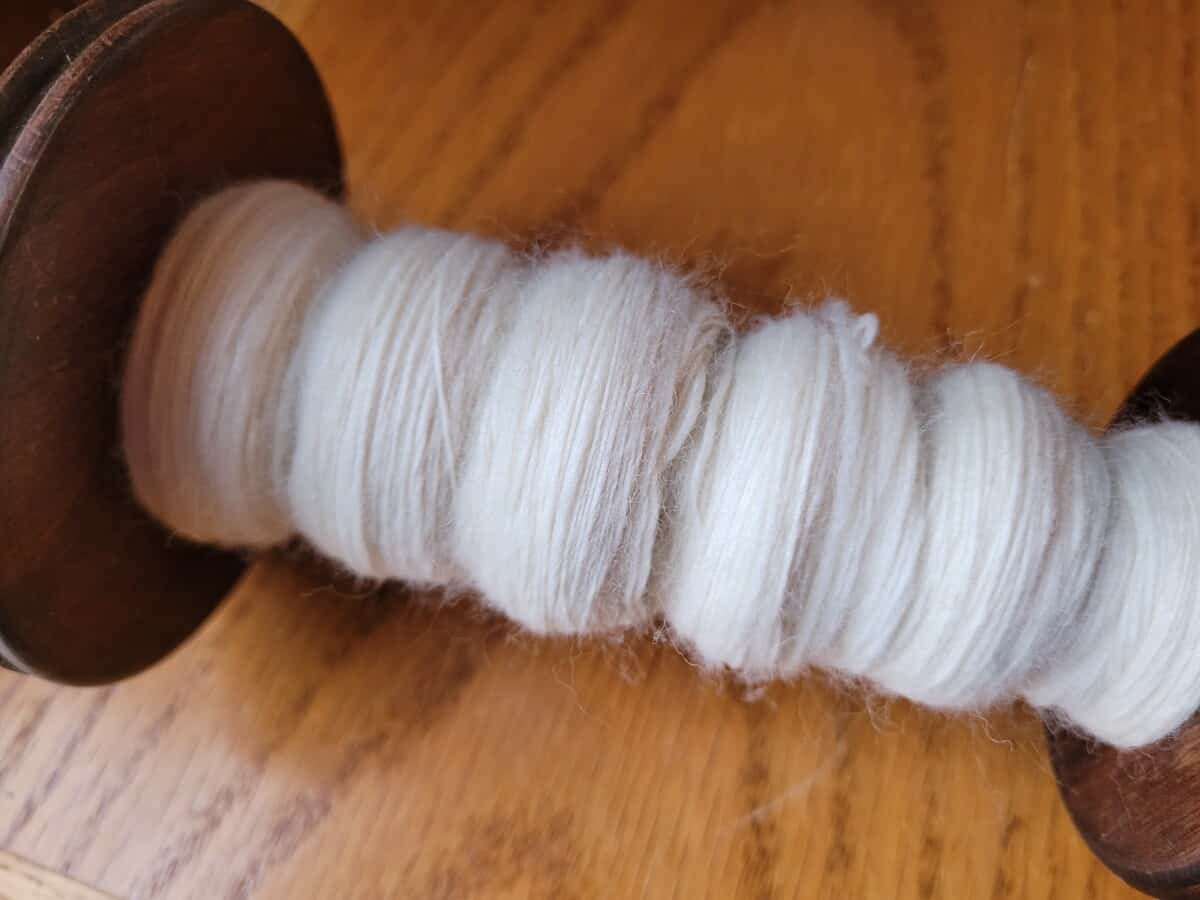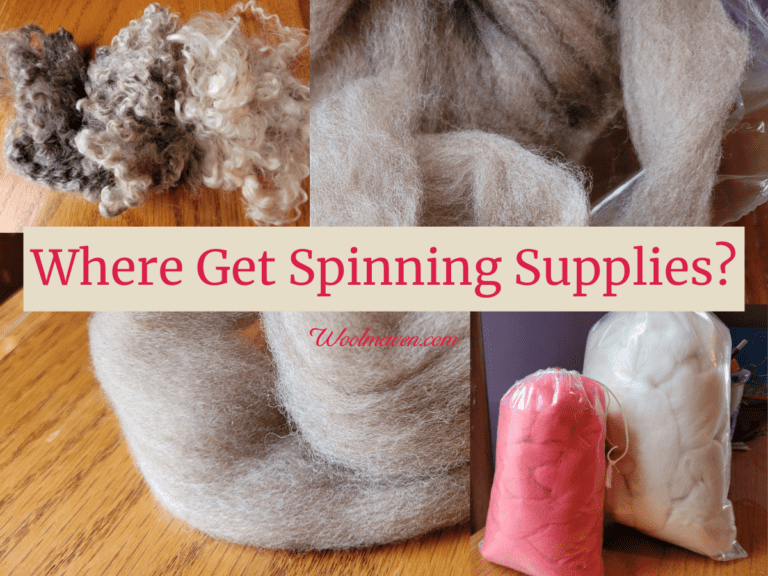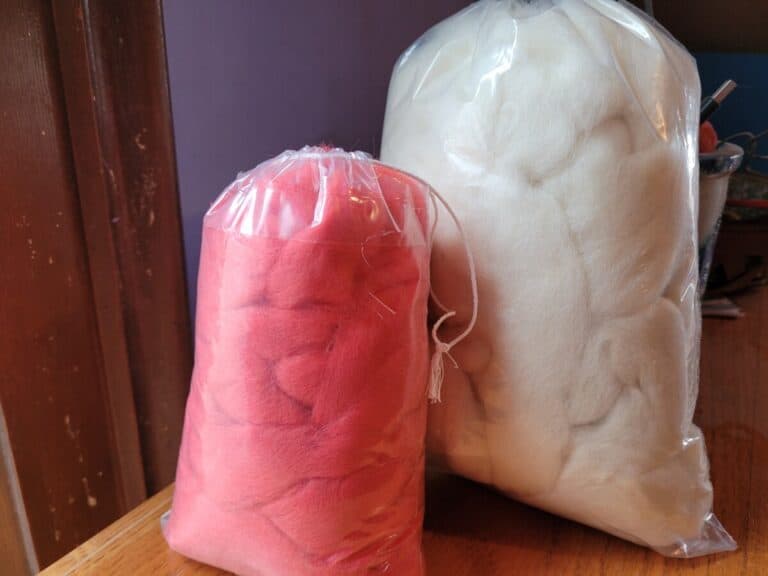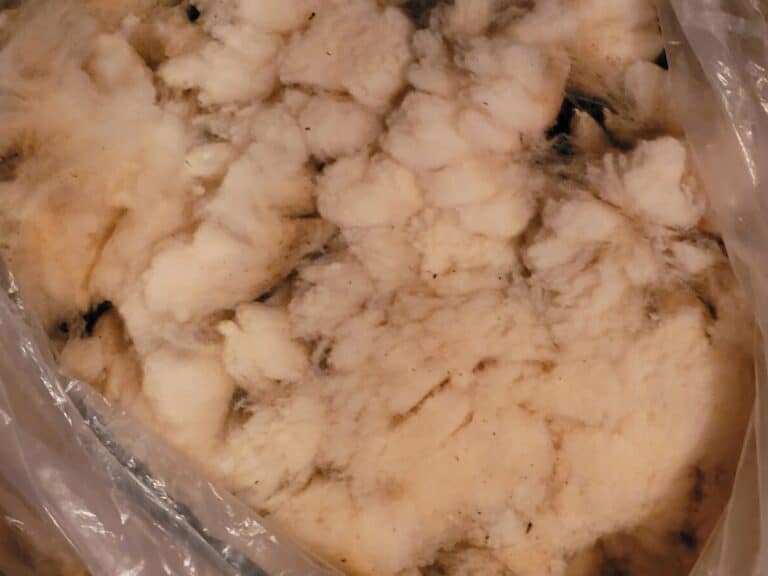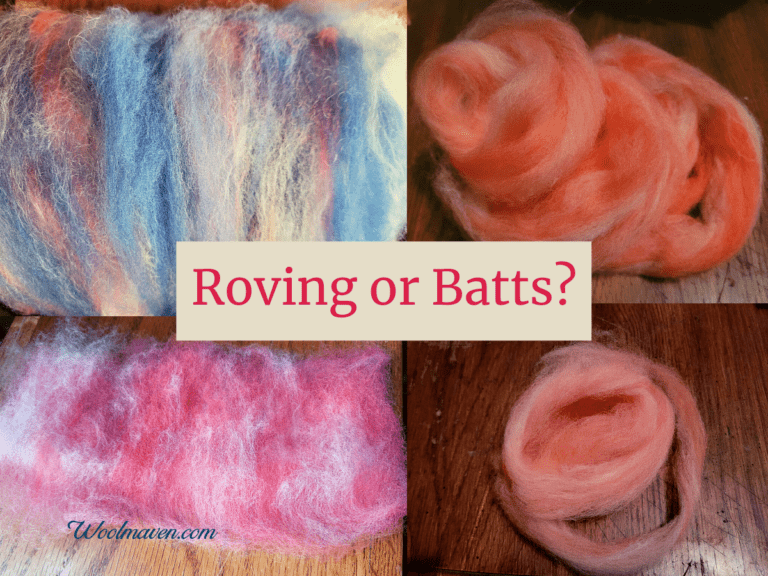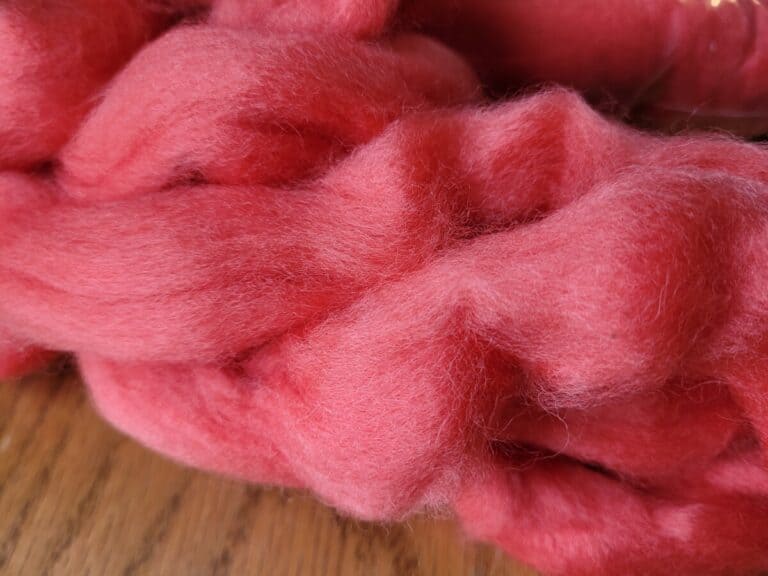Is Merino Hard To Spin?
Merino wool is a handspinning classic! You hear about this wonderful fiber everywhere and have surely seen it for sale in nearly any color and blend you can thin of at most any fiber shop.
Merino wool is definitely available and popular, but is merino right for you and how easy (or hard) is it to spin?
Merino wool is easy to spin for anyone who is comfortable with handspinning. Beginning handspinners will find other wools, like Corriedale, easier to use while learning to spin yarn.
Is Spinning Your Own Yarn Worth It? goes over the math of making vs buying yarn.
Merino wool is easy to spin
Overall, Merino wool is easy to spin. It is a wonderfully soft wool that is popular, and for good reason!
Merino wool is easy to find and fairly easy to work with for handspinners who are already comfortable with the basics of spinning, making merino is a classic to use in nearly any type of spinning project.
This post contains affiliate links, which means I receive commissions if you choose to purchase through links I provide (at no extra cost to you).
The easiest merino to work with will be a higher micron merino, which will still be very soft and wonderful, something close to 19 microns like a super fine merino top.
Lower micron merino (finer fibers) is available, but start with a 19 or even a 21 to get the feel of it.
I am trying to steer you away from the ultra fine merino, just at first. I know ultra fine merino is really attractive, but you will be better served by going with a more commonly available merino to start with.
Ultra fine merino will require you to be on your game, which is unlikely as a new spinner. I’m not trying to be harsh, just upfront to save you some frustration.
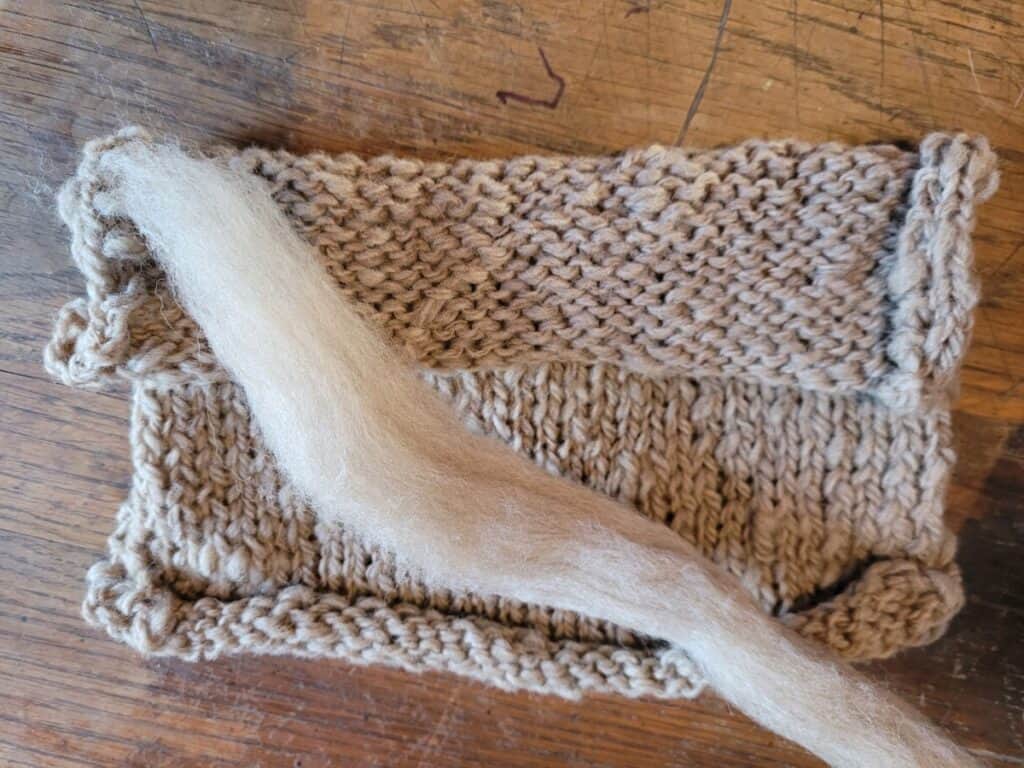
Start with merino professionally milled roving or combed top
You will have a lot of options of places to buy merino wool from, as well as choices of colors, blends and differing micron counts. If color or a certain blend makes a difference to you, go for it!
I would pick something fairly normal, go with a middle ground of 19 or 21 microns, since nearly all merino is going to be great to work with, as long as it has a decent staple length.
Save the ultra fine merino until you have mastered the regular merino.
Once you get the feel for merino wool, in general, then give ultra fine a shot, if you are interested in further expanding your spinning skills.
On a side note, I have been spinning my way through a variety of wools, just to explore and see what I might like to work with and the merino seems to give me a ton more useable fiber that other wools.
I know that’s a bit crazy, especially since the bags are sold by weight, so a 4 ounce bag has, no surprise, 4 ounces, so they should provide about the same amount of spinning time for me, but not so. Interesting!
I’m not sure if this is because it’s a fine wool or what, but those bags of merino seem to last and last!
Looking for a great resource on which fiber to pick and how best to use it? Consider getting The Fleece And Fiber Sourcebook, filled with wonderful pictures and details on just about any wool you can find.
Total beginners should start on another wool, like Corriedale
I must point out, that if you are a complete beginner, merino is not the best place for you to start out your spinning journey.
While merino is an easy to spin wool that has raving fans the world over, there are wools that are easier yet to work with, so why not start out with the most forgiving wool to begin with?
As a rank beginner, start with something dead easy, like Corriedale instead. As soon as you get the basics of spinning, you can move to merino pretty quickly, since it is versatile and pretty easy to work with.
6 Hard To Spin Wools is a list of fibers that all beginners should avoid at first, then you can branch out into the more challenging fibers!
How to spin Merino wool
The easiest way to spin merino is to buy ready to use combed top, which is commonly called roving.
True roving is actually a different fiber preparation than combed top, with top being much easier to find, but either will work for you to learn with.
Start with professionally milled fiber (combed top)
Of course, you can card your own wool, but to be perfectly blunt, the professionally milled top is so easy to work with, it makes spinning near effortless, so it is well worth the purchase.
Once you learn to spin merino from purchased fiber, then, by all means, prepare your own, but it will go easier on you if you learn on the done for you fiber at first.
Set wheel to a higher ratio
Make sure the wheel is set up to be on one of the higher spinning ratios that your wheel is capable of working at.
This means you want the wheel set up so that you will get a lot of spins of the bobbin for every one revolution of the main wheel.
My wheel is a Louet with bobbin lead or Irish tension, so I put my drive band on the smallest whorl that is on my bobbin, this way I get the most bobbin spin per wheel revolution.
If this is too much spin for you, you can always change to a different whorl as you go, but since you are not going to get much finer than merino, it only makes sense to start on the fastest whorl.
Split the roving (worsted spinning)
Now that your wheel is ready, take a look at your roving. It is probably a bit thinner than most other rovings you have worked with, but still has too much fiber for your yarn, so consider splitting the roving.
I like to split the roving at least in half, it gives me less to fiber to draft as I’m spinning, which seems to help me keep on target with the diameter of yarn I am trying to spin.
I will mention that I notice each fiber seems to have a yarn diameter that it likes to be drafted to.
Thicker or thinner than that takes more effort and diligence on your part. Since you are just getting started with merino, consider going with whatever diameter yarn seems to be the easiest to achieve.
You can work to a specific diameter later on, just get the feel for it now.
I like to have my roving separated out into sections, about 1-1.5 feet long, rather than working with the whole roving, it’s just easier to manage that way.
When I need to attach a new section of roving, I just stop treadling, get more roving torn off and start treadling again with the new roving lightly touching the yarn, it will pull then new fiber in.
You can draft out further than you think
I notice that I had to keep after myself to continue to draft, down further than I thought would still hold together, actually!
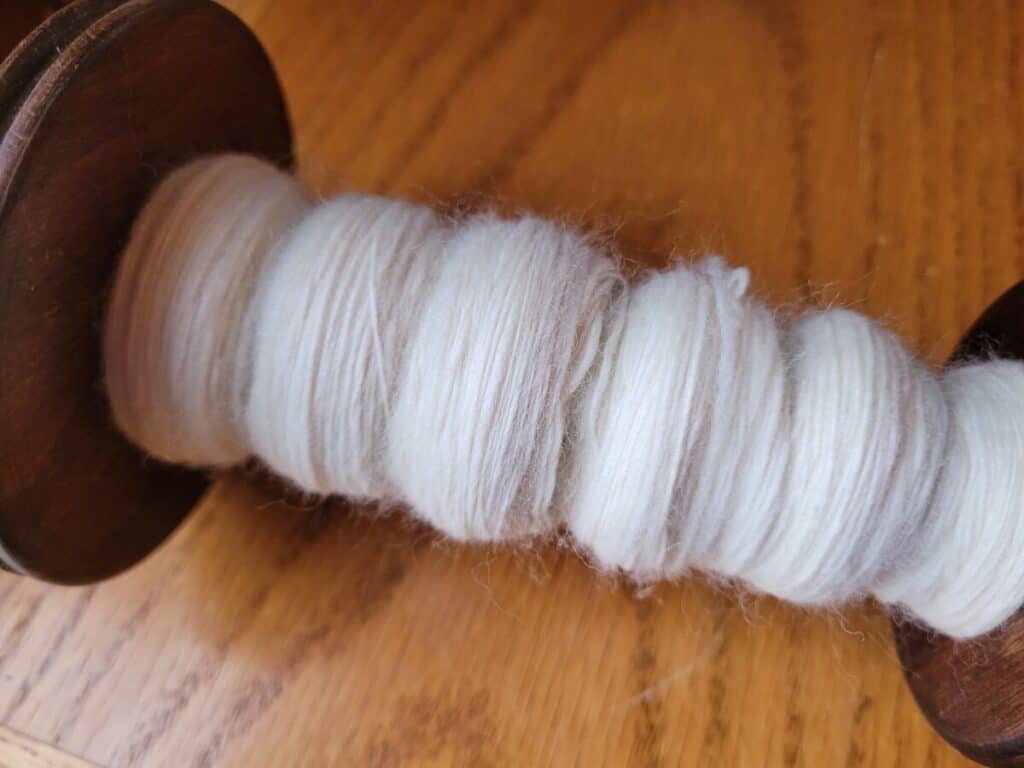
I was a bit skittish to keep drafting the yarn thin, being worried that I would break it, but I only had that happen a few times. The merino seems to have a good amount of grip and holds together well.
Yarn will bloom (poof up a bit) when you set it
Since it seems to bloom or poof up a bit when you set it, spinning thinner than you think seems to be more likely to give you the yarn you want.
I was seeing yarn that to me looked like thread and I was concerned it was too thin, but since I decided to ply it, that too thin yarn was actually perfect!
I tend to under draft if I am not getting the yarn diameter that I was hoping for, so I had to keep reminding myself to keep the fiber well drafted and for me, that’s the key to merino.
The Joy Of Handspinning has a nice article showing the different drafting techniques, including clear pictures.
I have noticed that most spinners tend toward one thing, over or under spinning or over or under drafting, and for me, it’s under drafting, and when I was a new spinner, overspinning, too.
As long as I kept drafting top of mind, spinning merino, even though I have only worked with it once before, was a breeze.
Try spinning from the fold for semi worsted
I also tried spinning from the fold with this merino, it worked great and was super easy. Give this technique a shot if you want a yarn with a bit more fluff than you’ll get with a worsted spin.
What Is Spinning From The Fold? And how to do it! is an article I wrote that goes into more details with this technique. It’s easier than you think!
Fine wool is not something I’m used to working with, but I loved using it and am definitely branching out into other fine wool breeds that I didn’t’ think I could handle.
Now, after spending some time on merino, I feel I can at least give a good effort to making a decent yarn from other fibers that I have steered clear of, but not anymore!
Raw merino wool needs to be washed
If you are working with a merino fleece, you will probably need to wash it before spinning.
I am a fan of spinning raw wool, actually, but I find that only low grease fleeces are good for spinning without washing first, and merino is not a low grease fleece.
If you have an fleece that still needs to be washed, proceed carefully! Washing, also called scouring is where you can accidentally felt up your fleece, a step which is hard if not impossible to fix.
Read washing instructions carefully before you start and be sure that the instructions are specifically for washing merino, since it is very prone to felting.

